When we’re talking SaaS businesses, one simple word comes to mind pretty quickly: competition. The SaaS market has grown exponentially over the past few years, projected to reach USD 462.94 Billion by 2028. There are loads of SaaS companies out there in nearly every industry, competing for the attention of the public.
So what does this mean for you?
Well, you’ll want a leg up on the competition, regardless of your industry. You can boost your conversion rates in many different ways, but if you really want to take your SaaS business to the next level, optimizing your SaaS landing pages is key.
Surely you’ve seen many examples of great SaaS landing pages online, but what makes them so special? What secret ingredients go into the pot and come out as an elegant and effective landing page?
While there may not be a magic formula that will exponentially boost your conversion rates with minimal effort, there are some tips and tricks of the trade that you can start using today to give you the edge on the SaaS business battlefield.
What are SaaS Landing Pages?
Before diving headfirst into the world of SaaS landing pages, you must know exactly what you’re getting into.
A landing page is best described as a standalone web page designed with a marketing campaign in mind. The entire purpose of this page is to have your customer perform an intended action, whether it’s to purchase your service, sign up for your newsletter, or any other type of conversion.
SaaS landing pages differ from other web pages, such as eCommerce landing pages, in several ways. Three of the biggest differences between SaaS landing pages and eCommerce landing pages are their purpose, audience, and content.
|
Differences |
SaaS landing pages |
eCommerce landing pages |
|
Purpose |
The primary goal of B2B SaaS landing pages is to generate leads and conversions by encouraging businesses to sign up for a free trial and schedule a demo, or contact sales. |
On the other hand, the primary goal of eCommerce landing pages is to drive direct sales. |
|
Audience |
B2B SaaS landing pages target business decision-makers and typically require more extensive information and explanation of the product or service. |
eCommerce landing pages, on the other hand, target individual consumers who may be more interested in product features, benefits, and pricing. |
|
Content |
B2B SaaS landing pages typically have more detailed content, including features, benefits, testimonials, case studies, and technical specifications. |
eCommerce landing pages usually focus on product images, pricing, descriptions, and reviews. |
Additionally, B2B SaaS landing pages tend to have more emphasis on building trust and credibility, such as showcasing industry awards or highlighting partnerships with well-known brands. eCommerce landing pages may focus more on discounts, promotions, and special offers.
Why are SaaS Landing Pages Important?
Above all else, SaaS landing pages are important because they give you the perfect opportunity to persuade the reader into taking the action you want them to take. Unlike an ordinary home page, you can zero in on a specific customer through headlines, great copy, imagery, CTA, and other elements that would be completely out of place on your home page.
Another great aspect of SaaS landing pages is how well they fit into the sales funnel. Since you can craft your page for just about any type of conversion, they can be used at nearly any stage of the funnel.
For example, if you wanted to gather email addresses, something which is suited for the top of the funnel, you could try something like this example from Celonis:
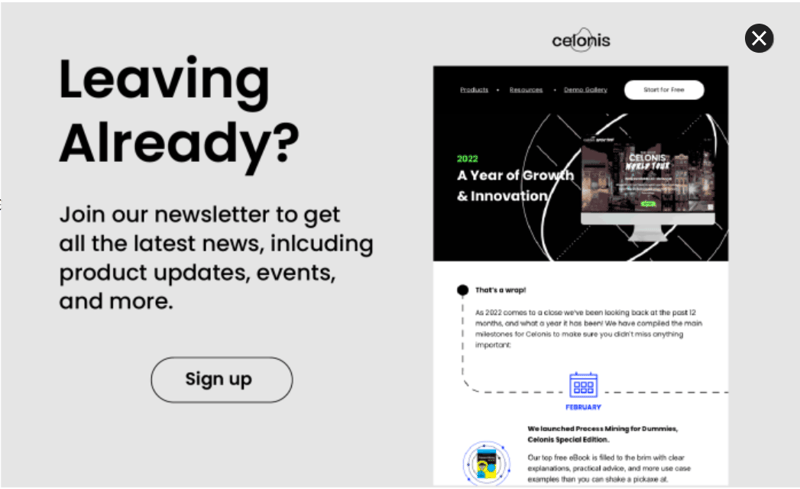
Here, Celonis is offering their insights in exchange for email addresses. A very effective lead generation tactic.
Or, if you’re looking to cater more to those further down-the-funnel customers, you might want to model your landing page after this great example from Drift in an effort to increase your demo signups.
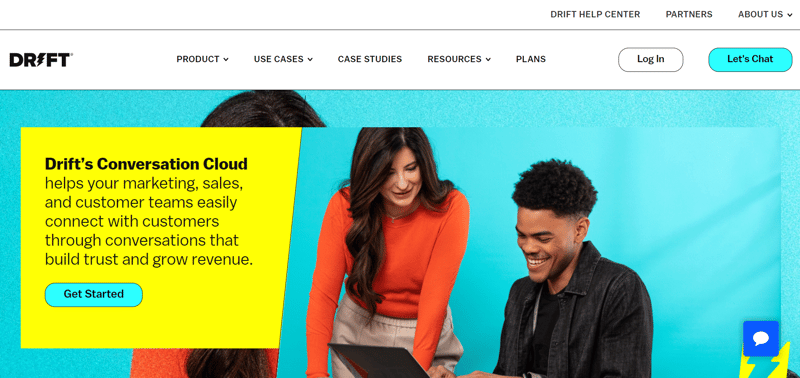
It’s simple. Provide your email address and receive a demo of Drift’s service. The key is making it as easy and straightforward as possible for your audience to complete the desired action.
The sheer versatility of SaaS landing pages makes them such a valuable tool for increasing your lead count. When optimized properly, they become a secret weapon.
Key Components of Great SaaS Landing Pages
Speaking of proper optimization, you won’t succeed with your landing pages if you fail to optimize them properly. In fact, you’ll likely fall flat on your face just after the start line. Remember, this is your one chance to persuade your potential customer into that ever-elusive conversion. You’ve gotta make it count!
So how do you best optimize your SaaS landing pages?
1. Take the Time to Plan
Just like NASA would never send shuttles into space without extensive planning, you shouldn’t be crafting SaaS landing pages all willy-nilly without some form of planning. While having the drive to get started is great, you’ll need to take a step back and ask yourself a few questions.
These include:
- Who is your target audience?
- What problem do they have that you can solve?
- What action do you want them to take on your LP?
- What makes your SaaS product unique?
Without a clear answer to these important questions, your SaaS landing page efforts will be subpar at best.
Who is your Target Audience?
Seems obvious enough, doesn’t it? What are you doing if you don’t even know who your ideal customer is? Having your target audience in mind when creating your SaaS landing pages should be a no-brainer
However, it can be easy to forget about this when you’re spending so much time trying to design the perfect, masterfully designed LP. Just remember, even if your landing pages are works of art on par with the creations of famous Renaissance artists, they’ll end up being completely useless without a clear target audience.
Not only do you need to know who your ideal customer is, but you also need to know who you’re targeting in your marketing funnel. As stated previously, SaaS landing pages can be used to great effect at various steps throughout the funnel. Hard selling a customer toward the top of your funnel with a free trial is a quick way to have them lose all interest.
Don’t lose sight of the big picture. Keep that ideal customer at the front of your mind when designing your landing pages.
What Problem Can You Solve?
At the end of the day, customers have an issue that they need to resolve. They’re scouring the internet for the missing piece of the puzzle. If you know exactly the problem your target audience needs fixing, you’ve got the upper hand.
Understanding what your audience wants from a product or service will help you craft copy for your landing pages centered around the solution to their problem. Through this copy, you can speak to them directly about their specific pain points and point them in your direction.
Take the time to understand your customers and success will surely follow.
What is the Intended Action?
The best landing pages are designed with a single intended action in mind. It should be made perfectly clear to your customers what is being asked of them, and what they’re getting in return.
Are you offering an e-book in exchange for their email address? Are you persuading them to sign up for your 7-day free trial?
Ensure you know exactly what you want your audience to do when they end up on your landing page. An unfocused landing page is a low-converting landing page.
What Makes Your Product Unique?
With the immense competition in the SaaS business world, having a clear unique selling point, or USP, is critical to your success.
When it comes to your SaaS landing pages, your USP should be shining through and screaming, “Here I am! Look at me!”. If your audience has no idea what sets you apart from all the other schmucks, then what’s stopping them from bouncing from your page and finding another company that resonates with them?
It’s simple. You’re leaving money on the table if you aren’t conveying your USP to your customers. There’s no way around it.
Surely it would be easy to dash into the world of SaaS landing pages all guns blazing with no set goal or plan in mind. However, if you want to find success and boost your conversion rates, these questions need to have clear answers.
2. Map Out Your Pages Properly
Like with many aspects of life, several key components make up an effective SaaS landing page. These components need to come together in a cohesive way to create a high-converting all-star.
What are some of these ingredients?
- A compelling headline
- Benefits of your service
- Strong imagery or video content
- Social proof
- CTA
Headline
First impressions last. Remember this when you start writing your landing page headline. Since it’s often the first bit of text your audience will see, you’ll have to make it count.
So how do you craft a compelling headline and sub-headline?
A great headline should:
- Be clear and concise
- Offer a solution to a problem
- Contain powerful words
- Be as short as possible
Look at what Box has done with their headline and sub-headline:
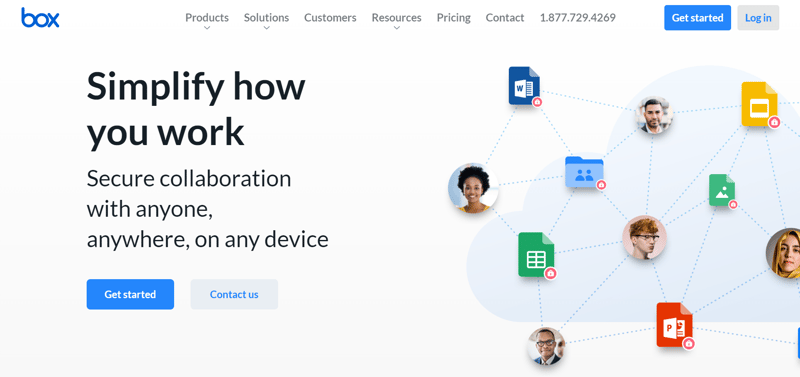
Simple. Concise. Offers a solution to a problem. This is exactly the kind of headline that converts.
Benefits
When it comes to benefits and features, loads of companies will make it all about them and forget the customer is looking for the benefits to them, not the useless features they’ll never use.
All the customer wants to know is what your service can do for them. Make this clear on your landing page!
Take a look at Algolia:
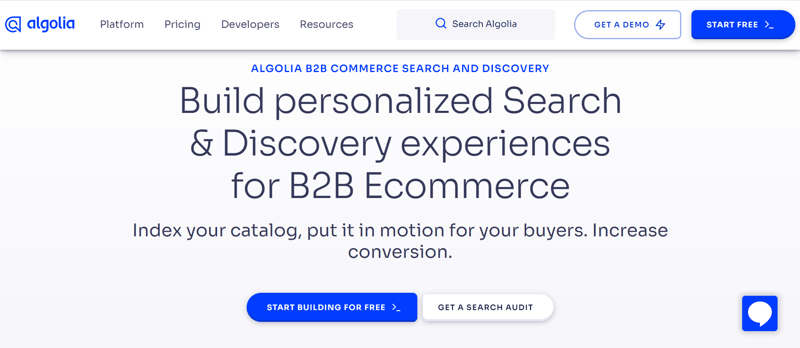
Algolia managed to show what their product can do but also relates it directly to what customers want. They know that their customers are looking for a more intuitive shopping experience. Instead of a bullet point list of features that customers may or may not use, they make sure to tap into the problems their customers are really facing.
Make sure you’re selling benefits, not features. It’s about the customer, not you!
Strong Imagery and Video Content
Imagery and videos work differently when we’re talking about SaaS landing pages. Since you don’t have a physical product to show off, what could you possibly do in terms of compelling imagery?
One great usage of imagery on SaaS landing pages is to actually demonstrate your service in action.
Check out how safety company Anvl uses a video demo of their software on their landing page:
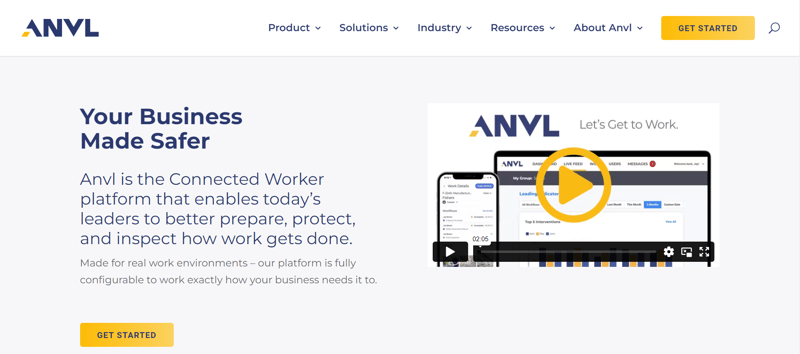
This is a great way to use video content to your advantage. Your customer sees exactly what they’re getting into before they even click your CTA, and you get to show off what makes your service stand out. A pretty big win-win!
Be careful though, don’t go overboard with the teaser video demo. You don’t want a ten-minute trial video on your LP that sends your customers bouncing in the blink of an eye.
Keep it simple. Keep it concise. And have fun with it. People are attracted to visuals, so use that to your advantage.
Social Proof
The benefits of using social proof are very well documented. No one sells your service better than someone who has zero affiliation with the company itself.
So how do you make social proof work on your SaaS landing pages?
CoreView has the right idea:
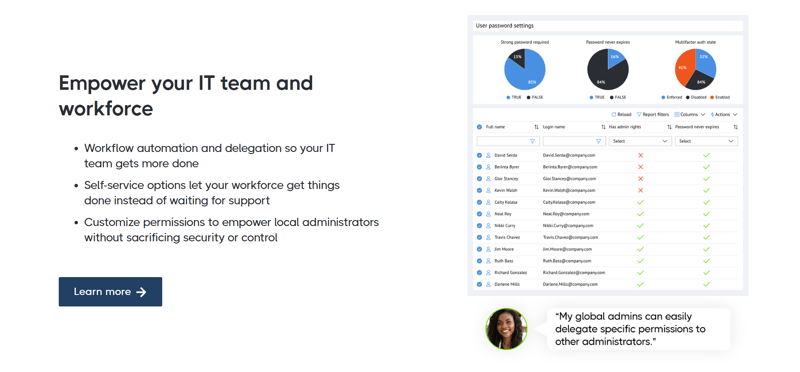
CoreView uses customer testimonials to help persuade its audience into taking action. This is a high-converting strategy that everyone should be taking advantage of. Not only that, but they’ve also added an image of the customer leaving the testimonial to add an extra layer of trust.
Social proof can take many other forms as well, including:
- Ratings
- Number of product users
- Social media posts
Incorporate these into your landing pages and watch those conversion numbers soar.
Strong CTA
Your SaaS landing page CTA is one of if not the most important parts of your page. A good CTA will make a landing page great, while a weak one will have your audience running for the hills.
Crafting an effective CTA is all about language and standing out. Vague CTA language and a button color that doesn’t pop aren’t going to pique the interest of customers with an already short attention span.
Check out what Pipefy has done with their CTA:
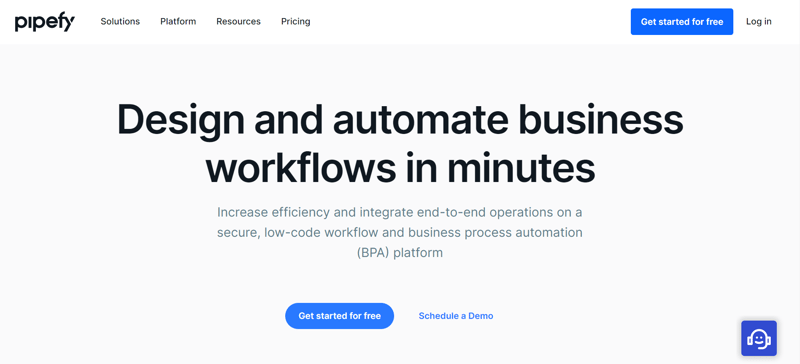
A blue button on a white page couldn’t stand out any better. And the language speaks for itself, inspiring customers to take action. Instead of sticking to the bland “try it out” phrase, Pipefy decided to take it to the next level.
Don’t be afraid to use multiple CTA buttons either. When they’re easier to spot and click on, that’ll certainly help your conversion rates.
Make it stand out, use action-inspiring language, and get to the point. These tips will have you creating fantastic CTA buttons in no time!
3. Offer Bait
When a fish looks at an empty hook, there’s a good chance it’ll just swim away. However, with a nice juicy worm on the tip, it’ll be far more inclined to bite.
Now, while your customers aren’t fish, a bit of bait can go a long way toward getting them to convert.
What types of bait can you offer? Well, that depends. If you want to provide a compelling offer, you need to understand what your customer’s pain points are. You won’t get a customer’s email address for a link to some blog post that doesn’t help them whatsoever.
However, offering an e-book that solves your customer's relevant problem can go a long way to nabbing that email address and gaining a lead.
For another example, check out Gripped:
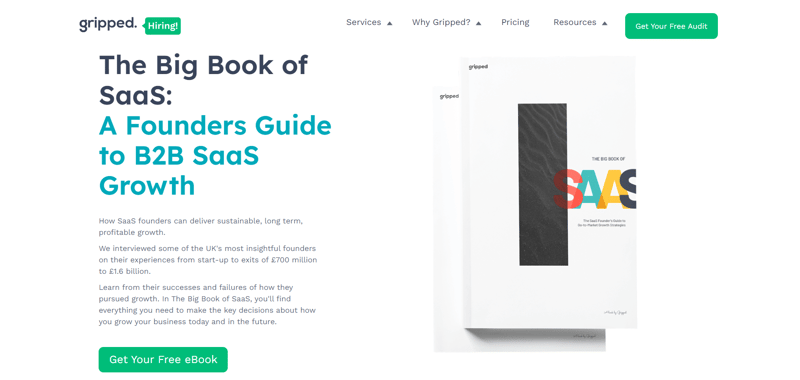
In exchange for your name and email address, they offer a handy guide to help you get started with growing your B2B SaaS business. This would speak volumes to any startup in the SaaS industry. A compelling offer indeed!
Don’t underestimate the power of giving away content for free on your SaaS landing pages. Give it a shot and watch your lead count grow.
4. Personalize Your Pages
Personalization in SaaS landing pages can be a tricky beast to tame. However, the effort you put into personalization goes a long way when it comes to increasing conversion rates.
The ability to personalize your SaaS landing pages comes from an effective segmented list of leads. This way, you can speak directly to specific customers about their needs.
Have a look at this landing page from ConvertKit:
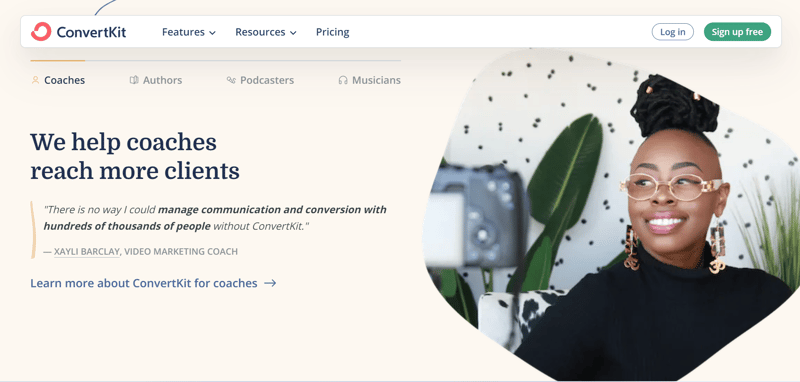
With a growing number of bloggers setting up email lists, ConvertKit personalized their landing page specifically to speak to this segment of their audience. And added some effective social proof too. Bonus points.
The truth is, your customers want to feel valued and important. A generalized landing page that looks like it could be sent to your entire customer base isn’t going to achieve that goal. Take the time to understand the types of people who are attracted to your service.
Watch your conversion rates rise as you start speaking directly to your audience through personalization.
5. Try Using Exit Popups
With bounce rates being as high as they are, what can you do to combat this? Surely there must be some sort of last-ditch effort to convert your fleeing customer?
Fear not. What you need is an exit popup.
This nifty little tool is your secret weapon. When a potential customer loses focus and goes straight for that little X in the top corner, they’re presented with an exit popup. For this to be effective, however, there has to be something in it for the customer in question. Essentially, combining an exit popup with an offer of some sort is a recipe for success.
Here are a few ideas for your exit-intent popups:
- Offer a free bit of content (e-book, guide, checklist, etc.)
- Offer a discount or deal on your service
- Offer a subscription to your email newsletter
You can also use urgency to your advantage too. If you’re offering 3 months at a discounted price, for example, you could combine this with a countdown to when the offer expires. People generally don’t enjoy feeling like they’re missing out on a deal, making this strategy effective.
Don’t let your customers bounce without a fight. Implement exit popups on your SaaS landing pages ASAP!
6. Keep Your Forms Simple and Concise
Face it. Nobody enjoys filling out forms. They can be tedious and seen as an obstacle between a customer and that juicy content or free trial they’re yearning for.
This means that it’s your job to make sure your SaaS landing page forms are as painless as possible to fill out.
So what are some practices you can implement today to optimize your LP forms?
Above all else, you need to remember only to gather the information which is absolutely necessary. If your customers feel as though they’re answering more questions than would be needed for applying for a credit card, you’ve probably lost them already.
Also, your forms will be different for someone signing up for your service as opposed to someone providing an email to sign up for your newsletter. As a rule of thumb, keep the questions for these secondary conversions to a minimum.
Filmora does exactly this with their offer of a demo:
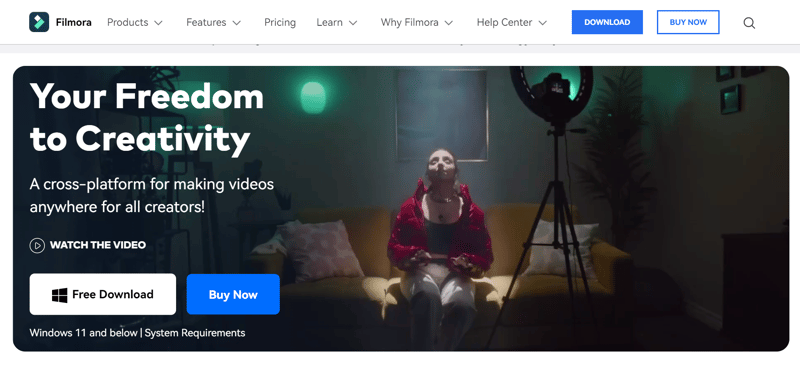
If you require more information and longer forms, consider using multi-step forms. These allow you to ask the same amount of questions without intimidating the customer. They show one field at a time, and only once the customer has filled in the previous field will the next field show up.
|
Single-step Forms |
Multi-step Forms |
|
Great for gathering minimal information |
Useful when more info is needed |
|
Work best on first-time visitors |
Works better for repeat visitors or leads further down your funnel |
Multi-step forms tend to perform better than their single-step counterparts in many cases. In fact, BrokerNotes managed to increase conversion rates by 46% by implementing a new multi-step form.
It’s plain to see that the less work the customer has to do, the better chance they have of converting. Take advantage of this and ensure your SaaS landing page forms are as optimized as possible.
7. Analyze, Test, Improve
A willingness to adapt and improve is going to set you apart from your competition. Setting up your SaaS landing pages and never testing them to see if they’re working is a recipe for disaster. There needs to be a constant effort to analyze and find out what strategies are working, and which need to go in the bin.
One effective way to test your SaaS landing pages is with A/B testing. This will allow you to evaluate certain aspects of your pages, such as your headline, imagery, or CTA buttons, and see which are performing and which are tanking. While it can be tedious, it’s a surefire way to see which ideas come out on top.
Maybe your LP isn’t mapped out correctly. How can you know where everything should be located? Where to put your CTA buttons?
Thankfully, heat maps show what parts of your pages your customers interact with most through scrolling and clicking. If the bottom of your page sees nearly no action, why put a CTA button there? Keep them where your customers are likely to interact with them!
Don’t settle for average. Test and analyze your pages and always be willing to improve. With this quality comes an increase in those conversions you’re after.
Steps for Creating an Effective SaaS Landing Page
Creating an effective SaaS landing page is essential to ensure that your product is presented in the best possible light and to convert visitors into paying customers. Here are the steps you should follow to create an effective SaaS landing page:
- Define Your Target Audience: Understanding your target audience's needs, preferences, and pain points will help you create a landing page that resonates with them.
- Create a Compelling Headline: The headline is the first thing visitors see on your landing page, and it should be attention-grabbing and relevant to your target audience. A compelling headline should clearly communicate the benefits of your product and inspire visitors to learn more.
- Use Engaging Visuals: Visuals are crucial to any landing page. They help to break up text and make your landing page more visually appealing. Use high-quality images or videos that showcase your product in action, and ensure they are optimized for the web.
- Craft Compelling Copy: Your copy should be concise, easy to read, and relevant to your target audience. Focus on the benefits of your product and how it solves its pain points. Use bullet points and subheadings to break up the text and make it more scannable.
- Include Social Proof: Social proof, such as customer testimonials or case studies, effectively builds trust with potential customers. Include testimonials from satisfied customers or case studies that showcase your product's results.
- Create a Clear Call-to-Action: Your call-to-action (CTA) should be clear, concise, and prominently displayed on your landing page. Use action-oriented language and make it easy for visitors to take the next step, such as signing up for a free trial or scheduling a demo.
- Optimize for Conversions: Finally, optimizing your landing page for conversions is important. This includes A/B testing different landing page variations to see which performs best, optimizing load times, and ensuring your landing page is mobile-friendly.
Creating an effective SaaS landing page requires a clear understanding of the steps outlined above. Follow these steps to create a landing page that effectively communicates the benefits of your product and converts visitors into paying customers.
Conclusion
There’s no shame in asking for help. Optimizing SaaS landing pages can be a daunting and intimidating task. If you need help creating an effective SaaS landing page, Roketto can assist you. Our team of experts can help you create a landing page that looks great and converts visitors into customers. Contact us today to learn more about how we can help you create a winning SaaS landing page.

Ulf Lonegren
Ulf Lonegren is CEO and Co-Founder of Roketto, where he has led digital marketing strategy for over 15 years. With extensive experience in both traditional SEO and emerging AI search optimization, Ulf has guided hundreds of SaaS and ecommerce companies through major search algorithm updates and platform shifts. His expertise spans from the early days of Google's algorithm changes through the current AI revolution, giving him unique insight into what actually drives sustainable search visibility. Ulf's approach focuses on fundamental optimization principles that adapt to new technologies rather than chasing trending acronyms, a philosophy that has helped Roketto's clients achieve measurable growth across multiple search paradigm shifts.












2.png)
2.png)









